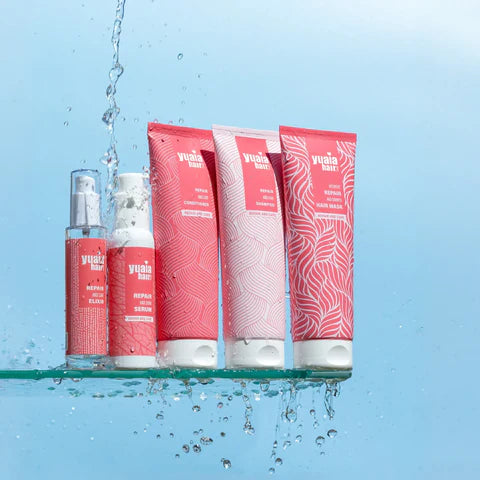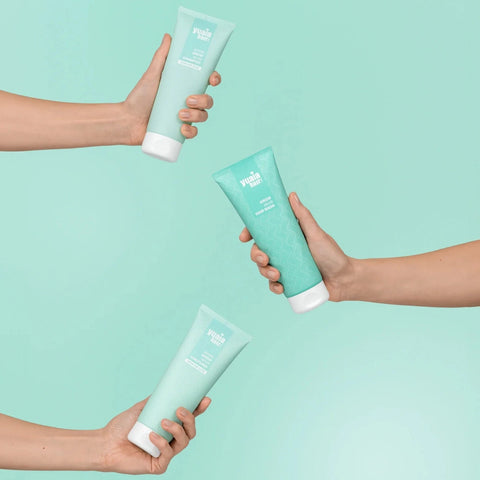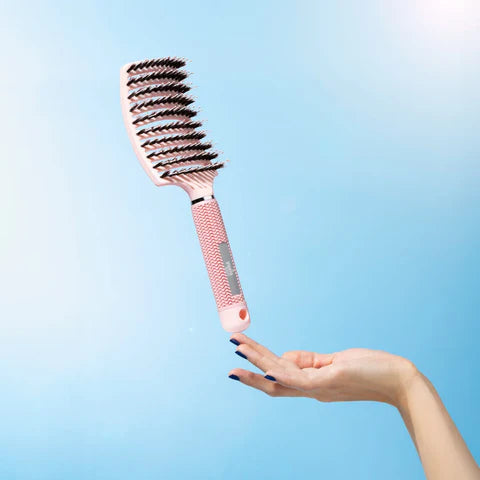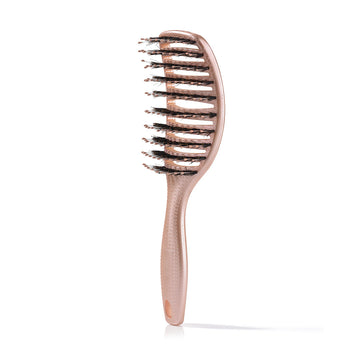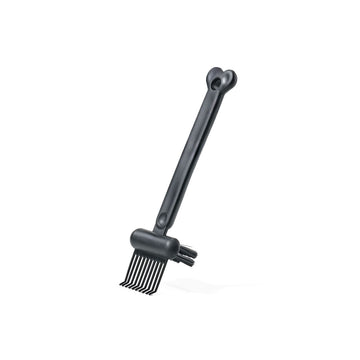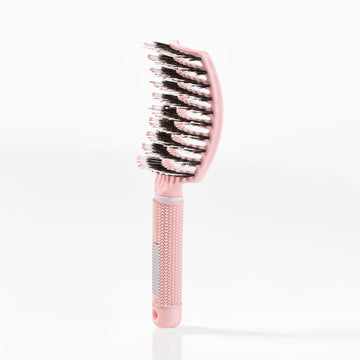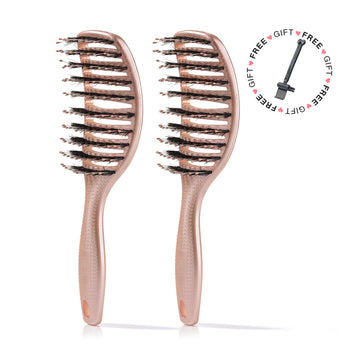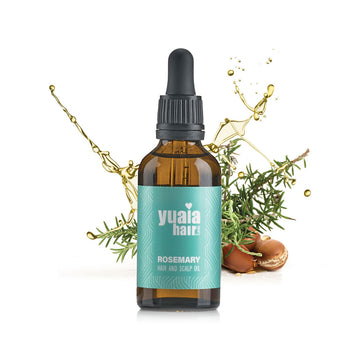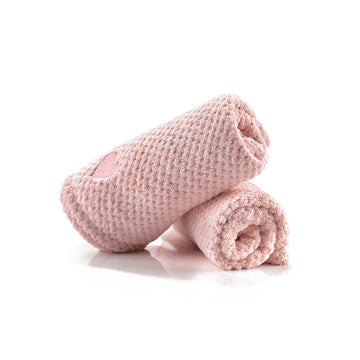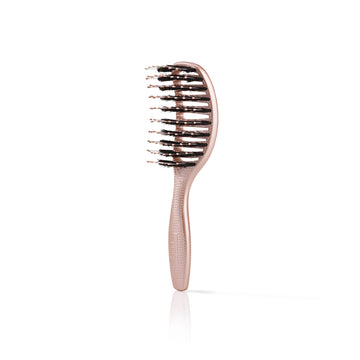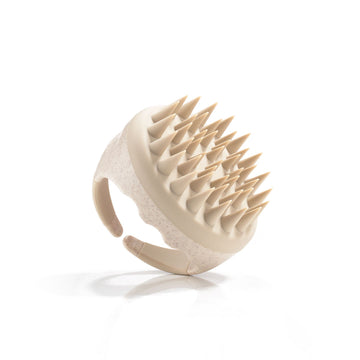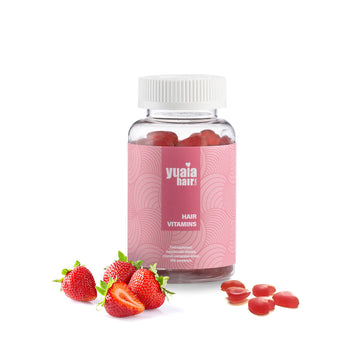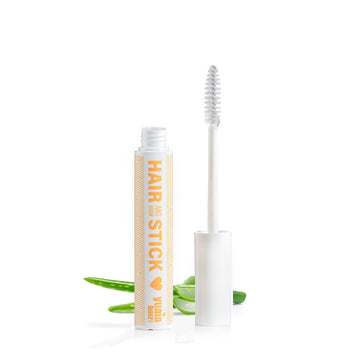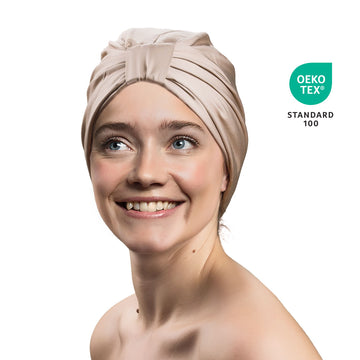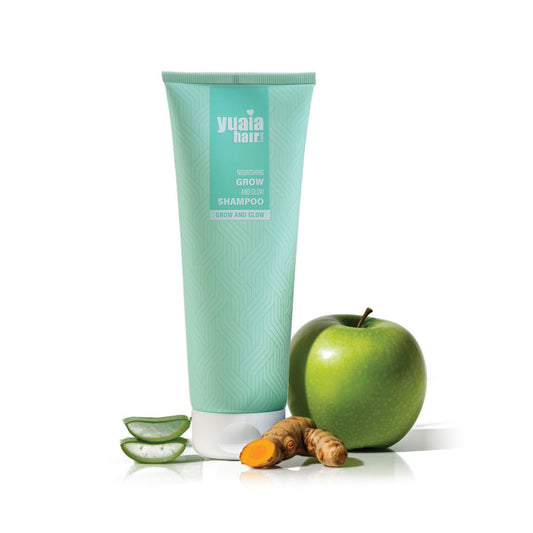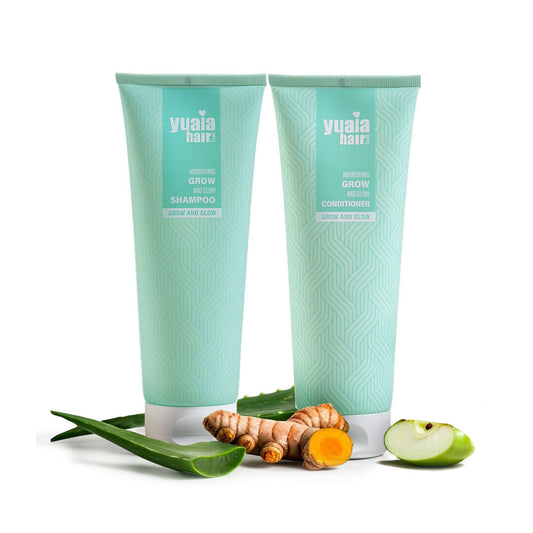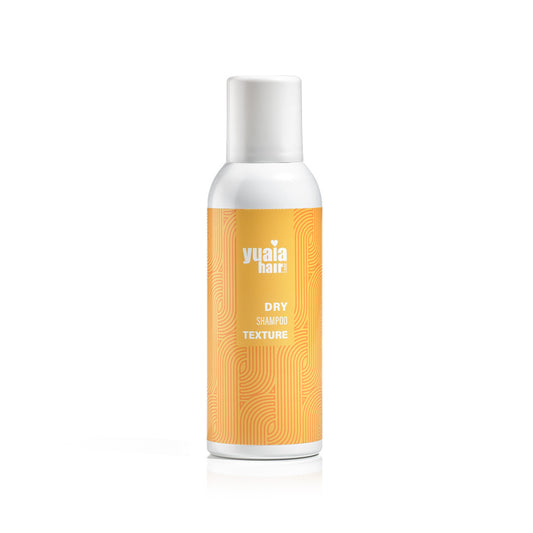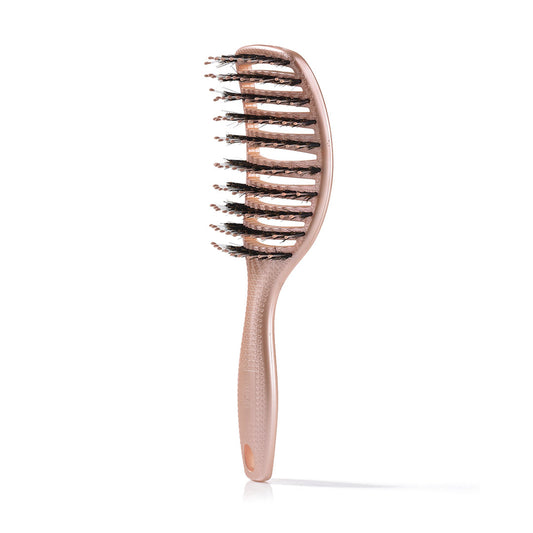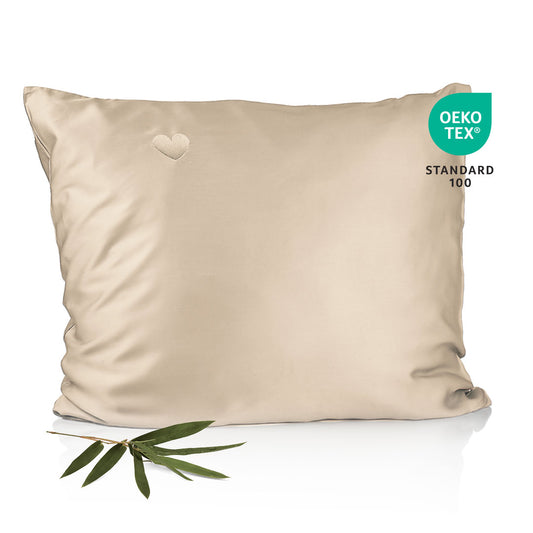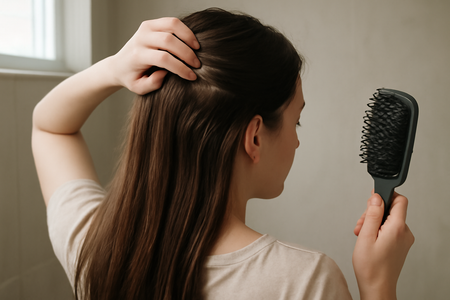
Choosing the right products
Selecting the appropriate products is a pivotal step in training your hair to be less oily. The goal is to maintain a balanced scalp environment without over-stripping natural oils. This balance can be achieved by using products specifically designed for oil control.
Sulfate-free shampoos: Opt for sulfate-free shampoos to avoid harsh detergents that can strip the scalp of its natural oils, prompting an overproduction of sebum. Our Grow and Glow Shampoo is an excellent choice for maintaining balanced oil levels while ensuring your hair remains hydrated and healthy.
Dry shampoo: Incorporating dry shampoo into your routine can be a game-changer for managing oiliness between washes. It absorbs excess oil, refreshes your hair, and adds volume without the need for water. Try our Dry Shampoo to extend the time between washes, keeping your hair looking fresh and clean.
Lightweight conditioners: Heavily formulated conditioners can weigh down your hair and contribute to oiliness. Instead, choose lightweight conditioners that nourish without leaving residue. Apply them only to the mid-lengths and ends to avoid adding unnecessary oil to the scalp.
Incorporating natural remedies
Natural remedies can complement your hair care routine by providing gentle, effective ways to manage oil production. These remedies often use simple ingredients that you may already have at home.
Aloe vera masks: Aloe vera is known for its soothing and astringent properties, making it an excellent choice for oily scalps. Apply a fresh aloe vera mask directly to your scalp, leave it on for about 30 minutes, and rinse thoroughly. This treatment can help reduce oiliness and promote a healthier scalp environment.
Green tea rinses: Rich in antioxidants and tannins, green tea can help regulate oil production and improve scalp health. Brew a strong cup of green tea, let it cool, and use it as a final rinse after shampooing. This natural rinse can leave your hair feeling refreshed and less oily.
Apple cider vinegar rinses: Apple cider vinegar is another effective remedy for balancing scalp pH and removing product buildup. Mix one part apple cider vinegar with two parts water, apply it to your hair after shampooing, and rinse out after a few minutes. This rinse can help clear away excess oil and maintain a balanced scalp.
Lifestyle and maintenance tips
Adjusting your daily habits can also contribute to less oily hair. Simple changes in how you handle your hair can make a significant difference over time.
Minimize touching and brushing: Avoid touching your hair frequently, as this can transfer oils from your hands to your hair. Similarly, excessive brushing can distribute scalp oils along the hair, leading to a greasy appearance. Instead, use a boar bristle brush like our Curvy Brush to gently distribute natural oils without overdoing it.
Appropriate water temperature: When washing your hair, use warm water instead of hot. Hot water can stimulate the scalp to produce more oil, while warm water helps cleanse without triggering excess oil production.
Natural adjustments for a balanced scalp
Training your hair to be less oily is not just about reducing wash frequency or using specific products; it's also about making natural adjustments that support a balanced scalp environment. Here are some additional tips to help you achieve less oily hair over time.
Understanding your hair type
Recognizing your hair type is essential in tailoring your approach to reducing oiliness. Different hair types, whether fine, thick, straight, or curly, have unique needs. For example, fine hair might require lighter products to avoid weighing it down, while curly hair may benefit from moisture-focused solutions. Identifying your hair type can guide your choice of products and techniques, ensuring they align with your specific needs.
Scalp massages for oil balance
Regular scalp massages can be beneficial in balancing oil production. By gently massaging your scalp with your fingertips, you stimulate blood circulation, which can aid in distributing natural oils more evenly. This practice not only helps manage oiliness but also promotes overall scalp health.
Using a bamboo pillowcase
Switching to a bamboo pillowcase can make a significant difference for those with oily hair. Bamboo is naturally breathable and moisture-wicking, helping to reduce oil buildup on your hair overnight. This simple change can contribute to a fresher, less oily appearance in the morning.
Frequently asked questions
How long does it take to see results when training your hair?
Typically, it can take two to four weeks to notice improvements in oil balance. This timeframe allows your scalp to adjust to the new routine and reduce excess oil production.
Can I still use conditioner if my hair is oily?
Yes, you can use conditioner, but it should be applied only to the mid-lengths and ends of your hair. Avoid applying conditioner to the scalp to prevent additional oiliness.
What are the benefits of using a boar bristle brush?
A boar bristle brush, like our Curvy Brush, helps distribute natural oils from the scalp throughout the hair. This can lead to a more balanced oil distribution, reducing the appearance of greasiness at the roots.
By incorporating these natural adjustments and understanding your hair's unique needs, you can effectively train your hair to be less oily. This holistic approach, combined with the right products and techniques, can lead to healthier, more balanced locks over time.
 2-4 day UK delivery
2-4 day UK delivery
 25.000+ satisfied customers
25.000+ satisfied customers
 Satisfaction Guarantee
Satisfaction Guarantee



